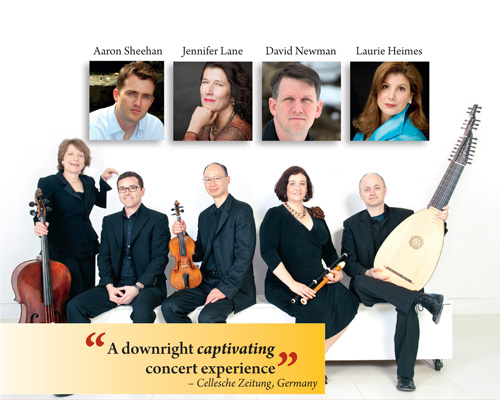
Odysseus and Nausicaa. Joachim von Sandrart, 1630.
by Anne Schuster Hunter
Say goodbye to chilly winter! Here comes something hot. In Art of the Prophets, Tempesta di Mare celebrates sizzling church music from seventeenth-century Germany.
Warm up, sink into the music and enjoy yourself. Even Martin Luther wants you to. In the 1500’s, he wrote, “Music drives out the devil and makes people cheerful.” Luther thought music was the best way to bring the Word of God to life—after preaching, of course. He’s the one who called it “the art of the prophets.”
Luther thought music was the best way to bring the Word of God to life—after preaching, of course. He’s the one who called it “the art of the prophets.”
Nicolaus Bruhns set Psalm 100, “Make a joyful noise unto the Lord!,” as a regular torrent of seventeenth-century high spirits. The vocal line in his sacred concerto for tenor soloist and strings, “Jauchzet dem Herren,” laughs along with the psalm while instruments frolic and gambol in imitation. It’s as much fun as puppy day at the dog run.
No puritanical fretting here about desires of the flesh. Johann Christoph Bach (a generation older than his cousin, Johann Sebastian) set the Song of Solomon as a very worldly, nay, sexy wedding cantata. In a solo for soprano and strings, Bach takes all the longing and lust in the text, “I am my lover’s, and my lover is mine…stay me with flagons, comfort me with apples: for I am sick of love,” and turns it into seven minutes of tension and release.
(Feature continues below…)
Art of the Prophets — Tickets and Venues
|
– Art of the Prophets glorious German vocal and instrumental music
image credit: Andy Kahl, et al.
pre-concert talks by social historian Tanya Kevorkian Use tabs and links below for ticket and venue information.
Click to hear soundclip of another piece by Philipp Heinrich Erlebach: performed by Tempesta di Mare, October 2008. |
(…Feature continued)
What better way to counteract the dehumanization of “total war” than an exuberant celebration of the self?
It’s over-the-top stuff, this early baroque German music. And you wonder: why this, why then, why there? Seventeenth-century “modern style” wasn’t uniquely German. New music with colorful melodies, snappy texts, “word painting,” and a stripped-down structure over a strong bass came from Italy, where they named it seconda prattica and turned it into Italian opera. Germans imported the new music and quickly adopted it. But the German version has an edginess, an extremeness, a soulfulness that seems all its own.
Could it be flavored with a tinge of Schadenfreude? These northern composers grew up in the shadow of the Thirty Years War, one of the worst wars in Europe’s history (1618–1648).

“Battle,” from The Miseries and Misfortunes of War, 1633. Jacques Callot.
Their parents’ generation helplessly endured armies, atrocities, pestilence, fire, famine and plunder almost all of their lives. In Germany, innocent civilian populations had been decimated, cities burned to the ground. Nobody had been unaffected by the Thirty Years War. Everybody knew just how low humankind could sink.
Rebuilding a culture quite literally from ashes, these children of hardship created perhaps as what Freud would call “the work of mourning.” What better way to counteract the dehumanization of “total war” than an exuberant celebration of the self? As art returned to Germany, it laughed, loved and was happy to be alive.
Enjoy.
Anne Schuster Hunter is a writer and art historian living in Philadelphia.

